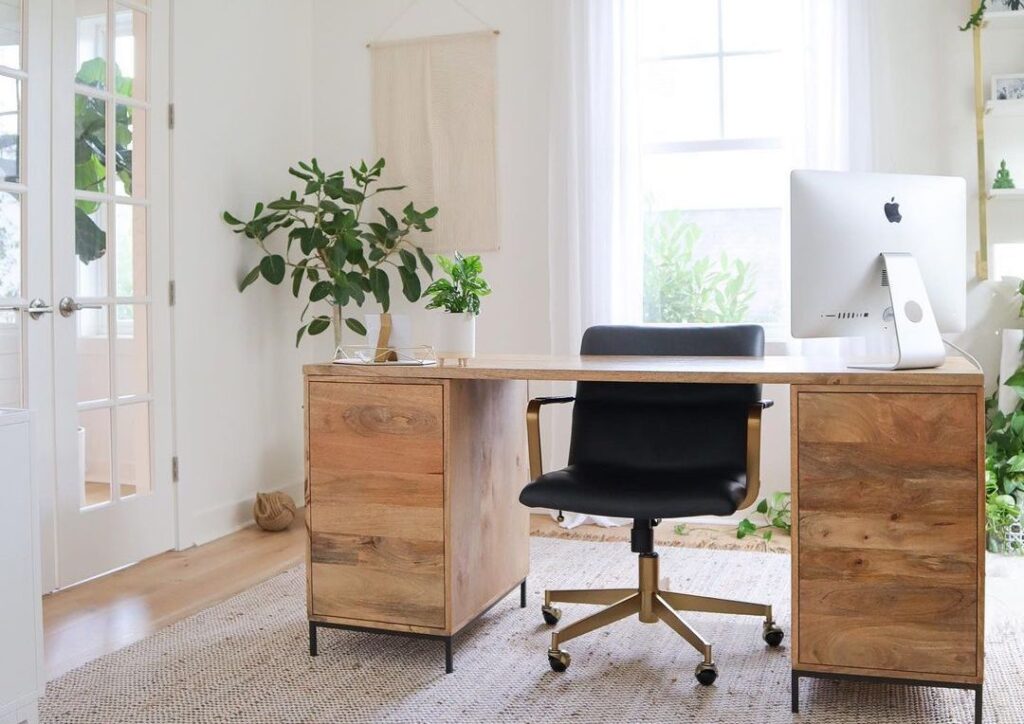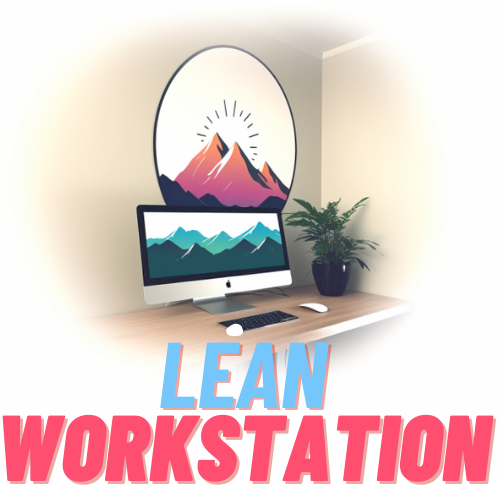
In this article, you’ll learn about the different computer setups that work well in a minimalist office. We’ll discuss the importance of simplicity, functionality, and aesthetics in creating a minimalist workspace. You’ll also discover some practical tips and ideas for decluttering your desk and organizing your computer cables. By the end of the article, you’ll have a clear understanding of what kind of computer setup would suit your minimalist office best.
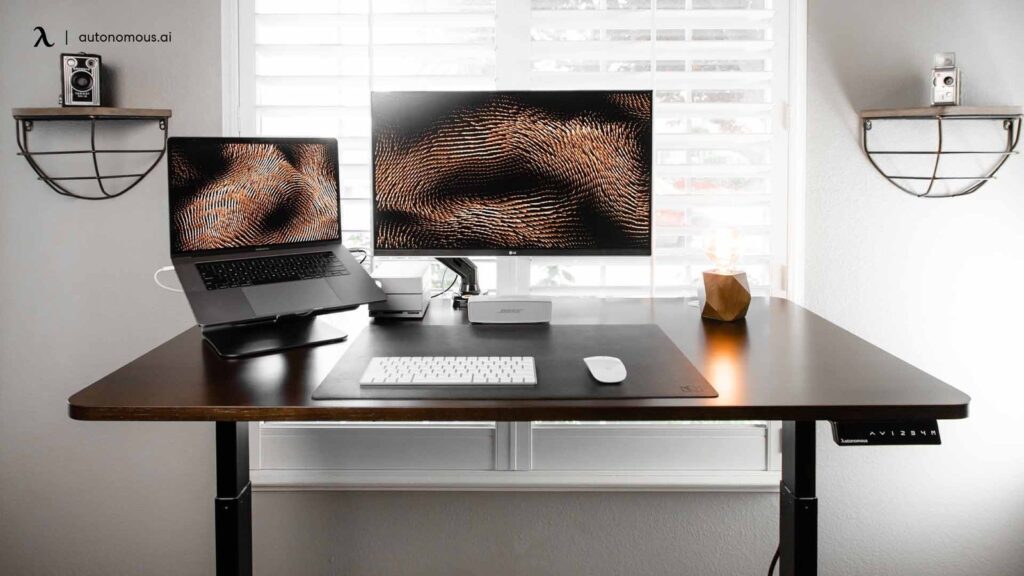
Choosing the Right Computer
When it comes to setting up a minimalist office, there are several key considerations to keep in mind. One of the most important decisions you’ll need to make is choosing the right computer for your needs. In this article, we will discuss the various factors to consider when selecting a computer for a minimalist office, as well as explore the key components of a minimalist computer setup.
Considerations for a Minimalist Office
Before diving into the specific details of computer selection, it’s important to first consider the overall needs and requirements of your minimalist office. Ask yourself questions such as: What tasks will I be performing on my computer? Will I be primarily working from home or on-the-go? What is my budget for a computer? By taking the time to answer these questions, you can ensure that you choose a computer that meets your needs while maintaining a minimalist aesthetic.
Desktop or Laptop?
One of the first decisions you’ll need to make when selecting a computer for your minimalist office is whether to opt for a desktop or a laptop. Both options have their advantages and drawbacks, so it’s important to consider your specific needs and preferences.
Desktop computers typically offer more power and storage options compared to laptops. They are also generally more ergonomic, as you can set up a separate monitor, keyboard, and mouse for maximum comfort. If you have a designated work area and do not need to be mobile, a desktop computer may be the best choice for you.
On the other hand, laptops offer portability and versatility. If you often find yourself working on the go or need the flexibility of being able to move your computer from one location to another, a laptop may be the better option. Laptops also typically take up less space, which is a crucial factor when it comes to setting up a minimalist office.
Operating System Options
Once you’ve decided between a desktop and a laptop, the next consideration is the operating system you prefer. The two most popular options are Windows and macOS, although there are also alternative operating systems such as Linux to consider.
Windows is known for its compatibility with a wide range of software and hardware options. It is a popular choice for many offices, and if you are already familiar with the Windows environment, it may be your preferred operating system.
macOS, on the other hand, is exclusive to Apple devices. It is known for its user-friendly interface, sleek design, and seamless integration with other Apple devices. If you are already part of the Apple ecosystem and prefer a more streamlined and cohesive experience, macOS may be the best fit for your minimalist office.
Key Components of a Minimalist Computer Setup
Now that we’ve discussed the considerations for choosing a computer, let’s explore the key components of a minimalist computer setup.
Monitor Selection
When it comes to selecting a monitor for your minimalist office, you’ll want to consider factors such as screen size, resolution, and ergonomics. A larger screen size can enhance your productivity by allowing you to view multiple windows or applications simultaneously. However, it’s important to strike a balance and choose a screen size that fits comfortably on your desk without overwhelming the space.
In terms of resolution, a higher resolution will offer a crisper and more detailed display. This can be particularly beneficial if you work with graphic design, video editing, or other visually-intensive tasks. Additionally, consider the ergonomics of your monitor. Look for a monitor that is adjustable in height and tilt, allowing you to find the most comfortable viewing position.
Ergonomic Keyboard and Mouse
When it comes to comfort and productivity, an ergonomic keyboard and mouse are essential components of a minimalist computer setup. Ergonomic keyboards are designed to promote a more natural and comfortable typing position, reducing the risk of repetitive strain injuries. Look for a keyboard that has a split design, curved keys, and wrist rests for optimal comfort.
Likewise, an ergonomic mouse can prevent hand and wrist pain caused by extended computer use. Look for a mouse that fits comfortably in your hand and offers customizable buttons and sensitivity settings.
Noiseless PC Accessories
In a minimalist office, a quiet work environment is key. This is why investing in noiseless PC accessories is a smart choice. Opt for a silent keyboard with scissor switch keys, as they produce minimal noise when typing. Similarly, consider a noiseless mouse that doesn’t produce loud clicking sounds.
Additionally, look for a quiet and efficient printer if you need to print documents occasionally. A noisy printer can disrupt your focus and create unnecessary distractions in your minimalist workspace.
Organizing Cables and Wires
Once you have selected the right computer and its key components, it’s important to address the issue of cable management. Messy and tangled cables can make your minimalist office look cluttered and disorganized. Here are some solutions to help you organize your cables and wires efficiently.
Wire Management Solutions
Wire management solutions such as cable trays, cable management sleeves, and cable management raceways can help keep your cables organized and tidy. These solutions allow you to route cables neatly and hide them from view, creating a clean and minimalist appearance for your office.
Cable trays, for example, can be installed under your desk to hold power cords and cables. They keep the cables off the floor and prevent them from becoming tangled. Cable management sleeves are another popular option, as they allow you to bundle and conceal multiple cables together. They are particularly useful for organizing cables that run along walls or desk edges.
Cable Clips and Ties
In addition to wire management solutions, cable clips and ties can also be used to keep your cables organized and out of sight. Cable clips can be attached to the edge of your desk or along the wall to hold individual cables in place. Cable ties, on the other hand, can be used to bundle multiple cables together and prevent them from becoming tangled.
By utilizing these simple and affordable cable management solutions, you can minimize cable clutter in your minimalist office and create a more streamlined and organized workspace.
Wireless Connectivity Options
To further reduce cable clutter, consider opting for wireless connectivity options whenever possible. Wireless keyboards, mice, and speakers can eliminate the need for additional cables on your desk. Similarly, wireless printers and scanners allow you to print or scan documents without the hassle of connecting cables.
Wireless charging pads are also becoming increasingly popular, allowing you to charge your smartphone or other compatible devices without the need for charging cables. By embracing wireless technology, you can create a clean and minimalist office environment without sacrificing functionality.
Optimizing Desk Space
In a minimalist office, optimizing desk space is crucial. Here are a few strategies to help you make the most of your limited workspace.
Compact Computer Desk Options
When selecting a desk for your minimalist office, consider opting for a compact and minimalistic design. Look for desks with built-in storage options, such as drawers or shelves, to maximize storage space. Compact desks with a floating design can also help create a sense of openness in your office.
Wall-mounted desks are an excellent choice if you have limited floor space. They allow you to free up precious floor space while still providing ample room for your computer setup. Consider installing wall-mounted shelves above your desk to store office supplies and keep your desktop clutter-free.
Utilizing Vertical Space
In a minimalist office, it’s important to utilize vertical space effectively. Look for shelving units or bookcases that can be mounted on the wall to store books, folders, and other office supplies. This allows you to keep your desk surface clean and uncluttered.
Additionally, consider using wall-mounted storage solutions to keep frequently used items within reach. Pegboards or wall grids with hooks and baskets can help organize office supplies while adding a touch of personality to your minimalist office.
Decluttering and Minimalist Storage Solutions
To maintain a minimalist aesthetic, it’s important to declutter regularly and find efficient storage solutions for your office supplies. Invest in storage containers or boxes that can be tucked away neatly on your desk or in a drawer. Look for minimalist storage solutions with clean lines and a neutral color palette to maintain a cohesive and clutter-free workspace.
Digital decluttering is also essential in a minimalist office. Take the time to organize your digital files and folders, deleting any unnecessary files to free up storage space on your computer.
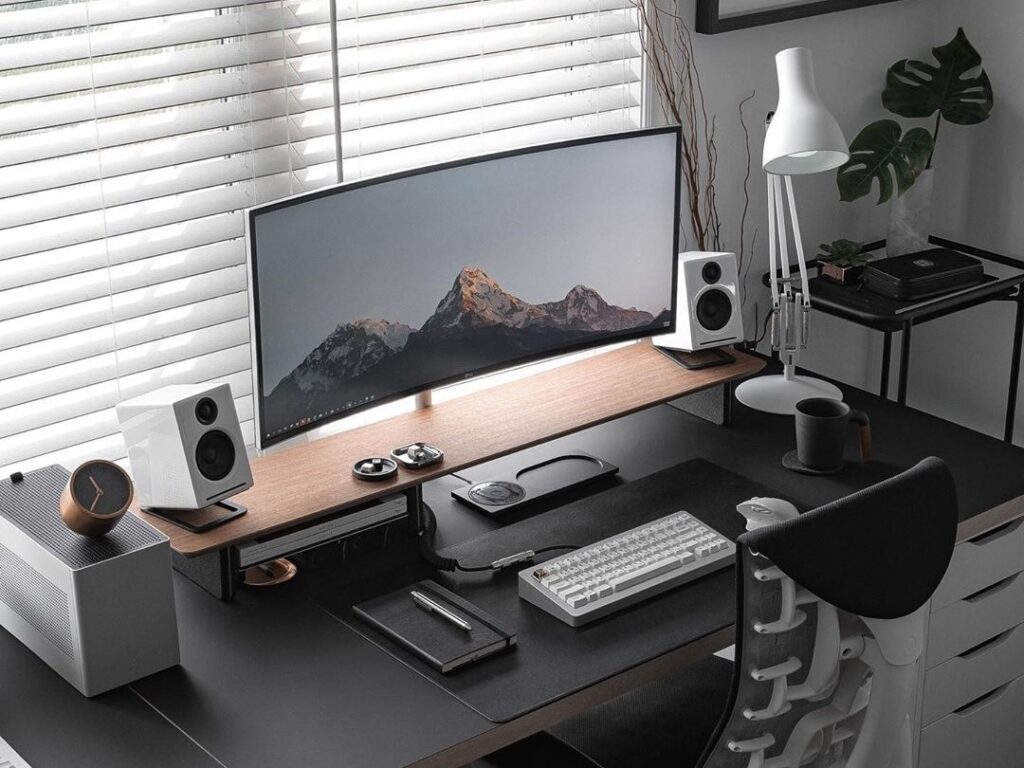
Comfort and Productivity Enhancements
Creating a comfortable and productive work environment is paramount in a minimalist office. Here are some enhancements that can make a significant difference in your overall well-being and productivity.
Ergonomic Chair Selection
Since you’ll be spending a significant amount of time seated at your desk, investing in an ergonomic chair is crucial. Look for a chair that offers adjustable height and lumbar support. It should allow you to maintain proper posture and reduce the risk of back pain and discomfort.
Proper Lighting for the Office
Good lighting is essential for a minimalist office. Natural light is ideal, as it not only brightens up the space but also contributes to a positive mood and increased productivity. Position your desk near a window and use light, sheer curtains to allow ample sunlight to enter your workspace.
In addition to natural light, consider investing in task lighting for your desk. Desk lamps with adjustable brightness settings and color temperatures can provide adequate lighting for your work activities while reducing eye strain.
Enhancing Indoor Air Quality
Indoor air quality plays a crucial role in your overall well-being and productivity. Poor air quality can lead to respiratory issues, allergies, and difficulty concentrating. In a minimalist office, it’s important to create a clean and healthy environment.
Ensure proper ventilation by opening windows whenever possible. Consider incorporating indoor plants into your office decor, as they not only enhance the aesthetic but also act as natural air purifiers. Additionally, investing in an air purifier can help remove pollutants and allergens from the air, creating a healthier workspace.
Streamlining Software and Apps
In addition to hardware considerations, streamlining software and apps in your minimalist office can enhance your productivity and organization. Here are some strategies to consider.
Utilizing Cloud Storage
Cloud storage is a great way to free up space on your computer and maintain a clutter-free digital environment. Services like Google Drive, Dropbox, and Microsoft OneDrive allow you to store and access files from any device with an internet connection. By storing files in the cloud, you can easily collaborate with others and ensure that your important documents are backed up.
Digital Note-Taking and Organization
In a minimalist office, opting for digital note-taking and organization systems can help eliminate physical clutter. Use apps such as Evernote, OneNote, or Apple Notes to take and organize your notes digitally. These apps provide features like searchable text, tags, and reminders, making it easy to find and access your notes whenever needed.
Task and Project Management Tools
To stay on top of your tasks and projects, consider using task and project management tools. Apps like Todoist, Trello, and Asana can help you create to-do lists, set deadlines, and collaborate with others. By organizing your tasks digitally, you can simplify your workflow and increase your productivity.
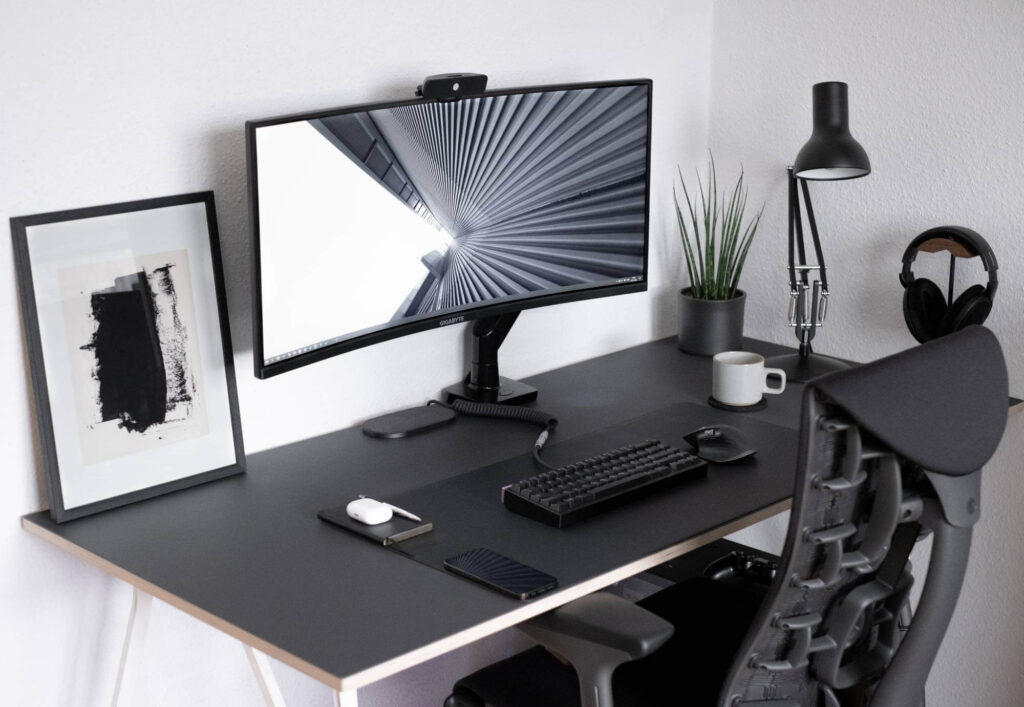
Creating a Minimalist Aesthetic
Now that we’ve covered the essential components of a minimalist computer setup, let’s explore ways to create a minimalist aesthetic in your office.
Neutral Color Palettes
In a minimalist office, neutral color palettes are key. Opt for shades of white, gray, beige, or muted colors for your walls, furniture, and decor. These colors create a sense of calm and cleanliness, contributing to a minimalist and organized ambiance.
Minimalist Desk Accessories
When it comes to desk accessories, less is more in a minimalist office. Choose a few carefully curated items that serve both functional and aesthetic purposes. Consider investing in a minimalist desk organizer, a sleek pen holder, or a simple yet elegant desk clock. These accessories not only add a touch of personality to your workspace but also help keep your desk clutter-free.
Incorporating Plants for Greenery
No minimalist office is complete without some greenery. Indoor plants not only add a splash of color but also provide health benefits by improving air quality and reducing stress. Opt for low-maintenance plants such as succulents, pothos, or snake plants that require minimal care. Place them strategically on your desk or on wall-mounted shelves to add a refreshing and natural element to your minimalist office.
Efficient Cable Management Solutions
Efficient cable management is crucial in a minimalist office to create a clean and organized workspace. Here are some tips to help you manage your cables effectively.
Power Strip Placement and Organization
Power strips are essential for connecting and powering your various devices. However, they can quickly become a source of cable clutter. To keep your power strip organized, consider attaching it to the underside or back of your desk. This helps conceal the cables, preventing them from hanging loose and creating a messy appearance.
Concealing Cables with Cable Boxes
Cable boxes are a great solution to hide excess cables and power adapters. These boxes have openings on either end, allowing you to thread your cables through while keeping them neatly organized and hidden from view. Place the cable box on the floor or behind your desk to create a clutter-free environment.
Effective Cable Routing
Proper cable routing is essential to maintain a minimalist aesthetic. Use cable clips or cable management sleeves to route cables along the edges of your desk or the back of your monitor. This ensures that cables are kept tidy and out of sight, creating a clean and organized workspace.
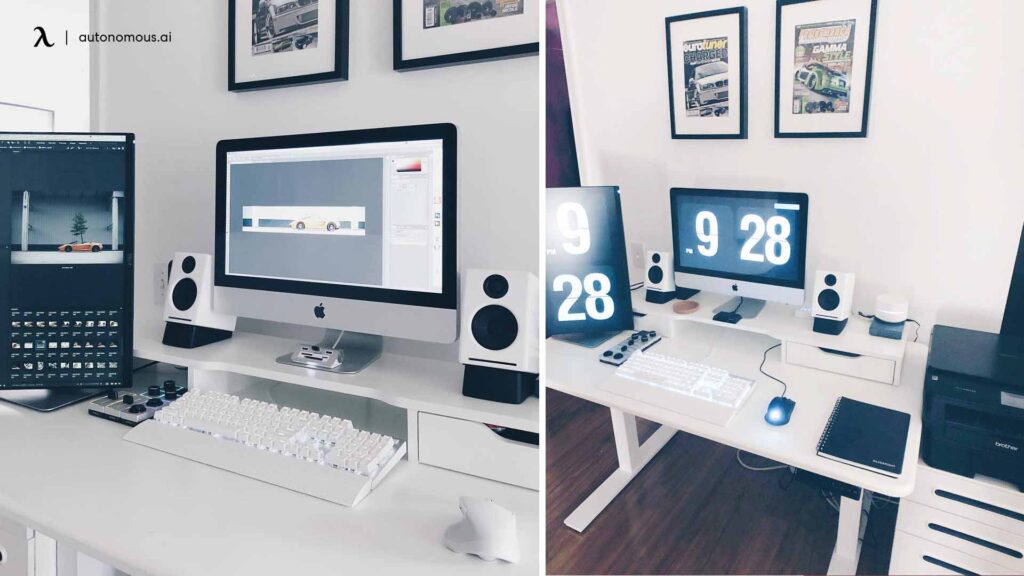
Maximizing Productivity in a Minimalist Office
To maximize your productivity in a minimalist office, it’s important to eliminate distractions, implement time management techniques, and create a comfortable work environment.
Eliminating Distractions
Create a designated workspace that is free from distractions. Remove any unnecessary items or clutter from your desk that may divert your attention. Use noise-cancelling headphones or play ambient music to drown out background noise and increase your focus.
Implementing Time Management Techniques
To make the most of your time in a minimalist office, consider implementing time management techniques such as the Pomodoro Technique or time blocking. These techniques can help you stay focused, prioritize tasks, and increase your productivity.
Creating a Comfortable Work Environment
A comfortable work environment is crucial for optimal productivity. Ensure that your desk and chair are ergonomically designed to support good posture and prevent discomfort. Consider adding a comfortable cushion or footrest to enhance your seating experience. Additionally, maintaining a clean and clutter-free workspace can contribute to a calm and focused mindset.
Conclusion
Achieving simplicity and functionality in a minimalist office requires careful consideration of the computer setup. By selecting the right computer, optimizing desk space, organizing cables and wires, enhancing comfort and productivity, streamlining software and apps, creating a minimalist aesthetic, and maximizing productivity, you can create a minimalist office that works for you. Remember, a minimalist office is not just about aesthetics; it’s about creating a clean and organized space that allows you to focus on your work and achieve greater productivity.
